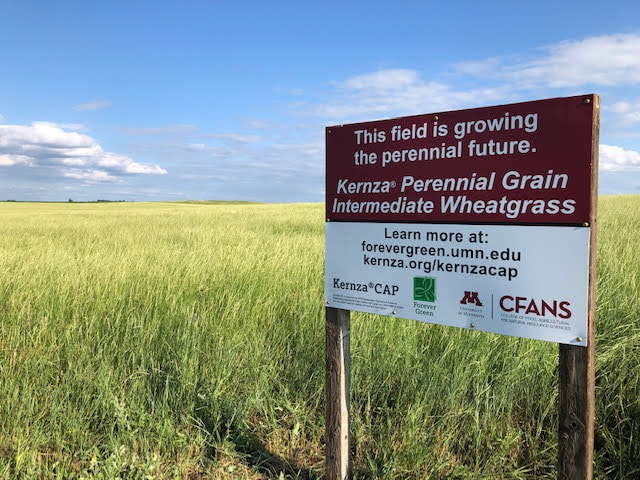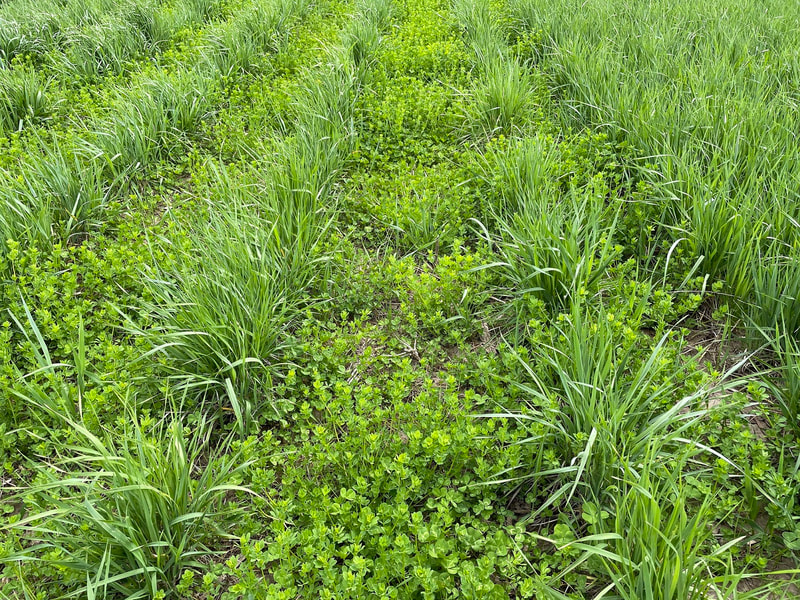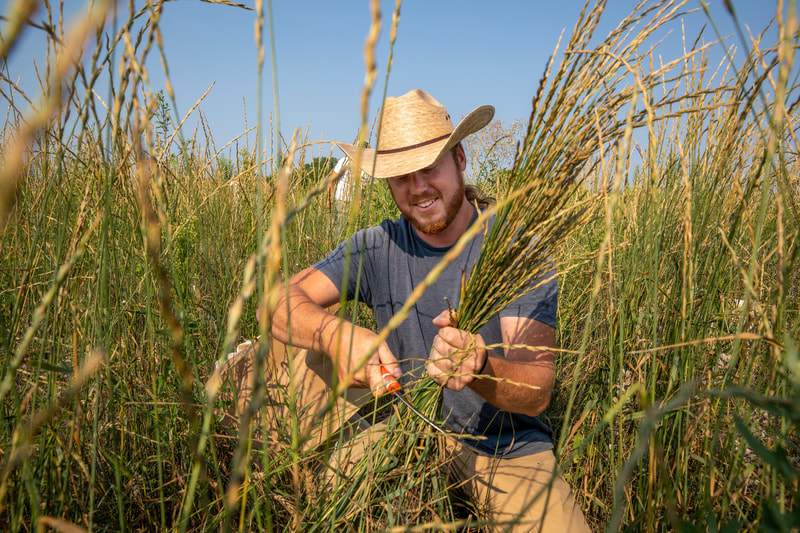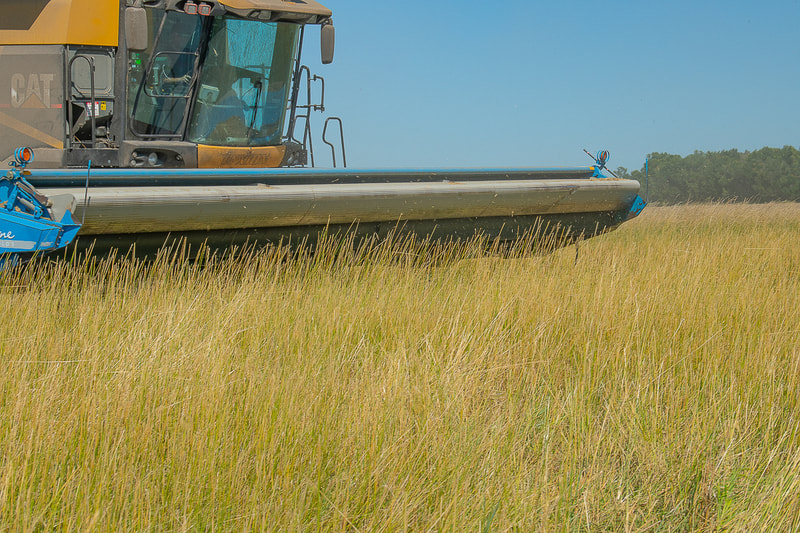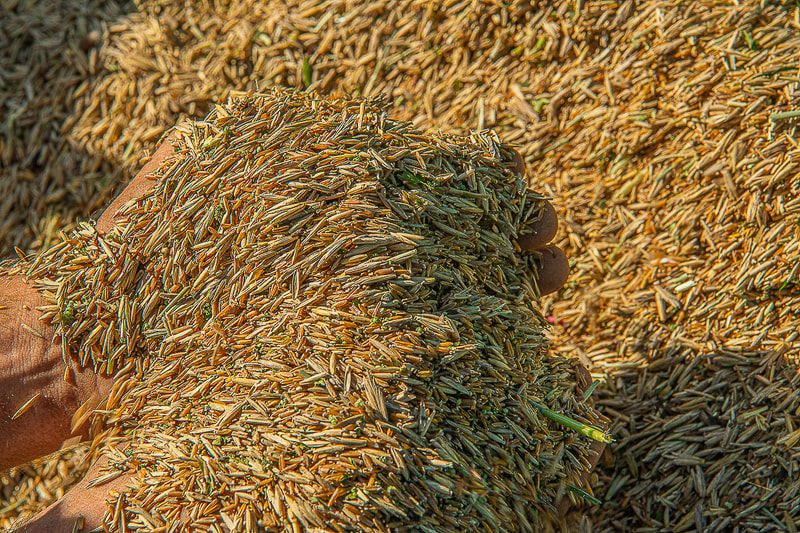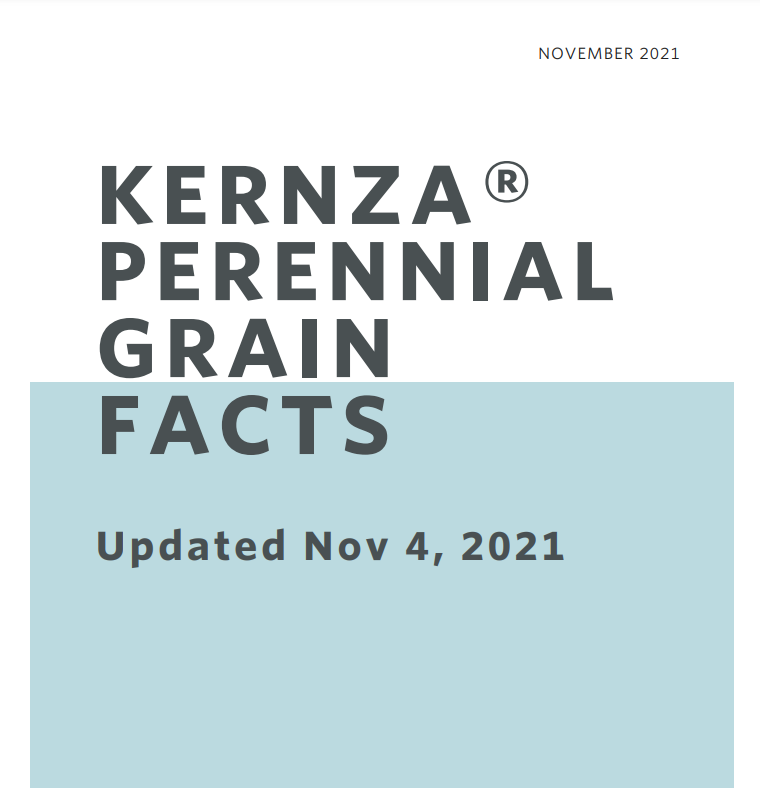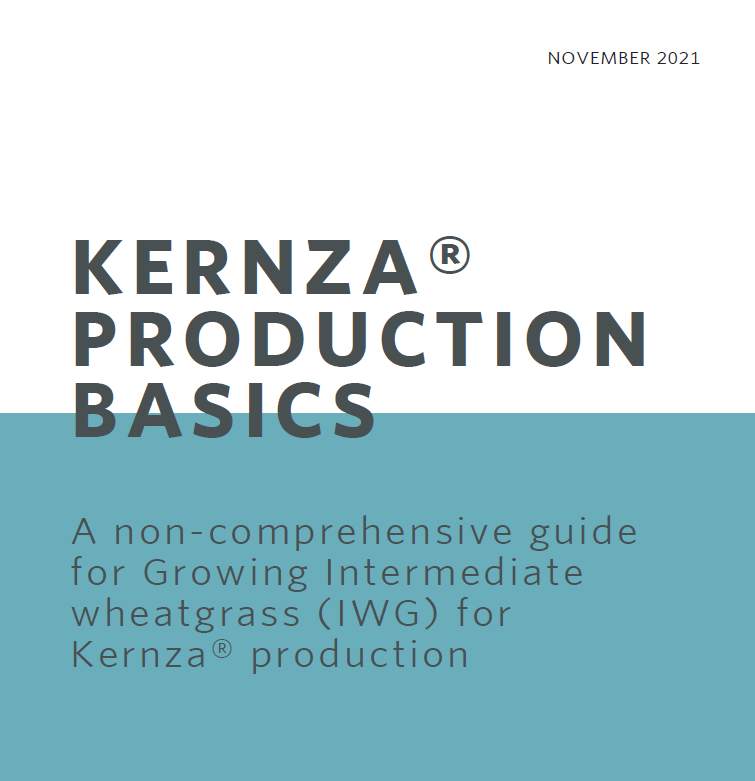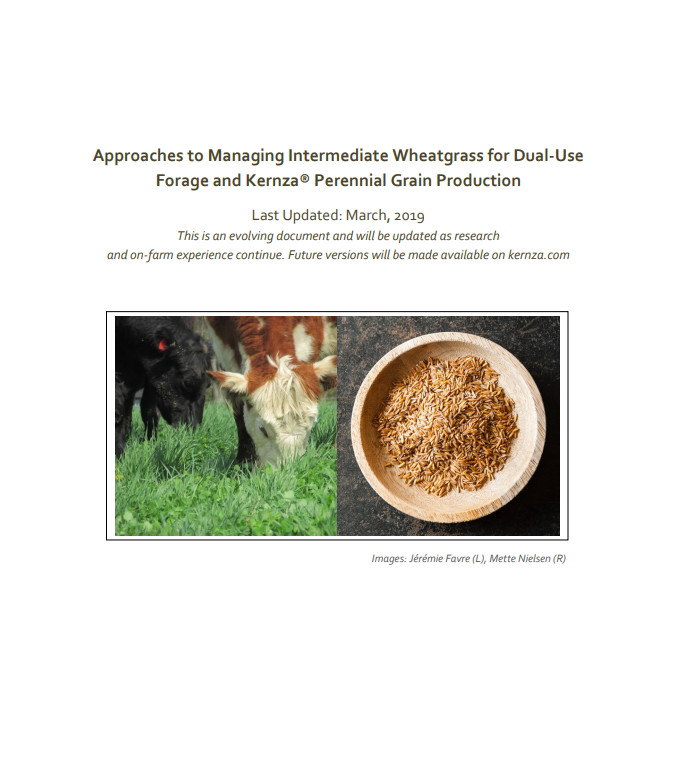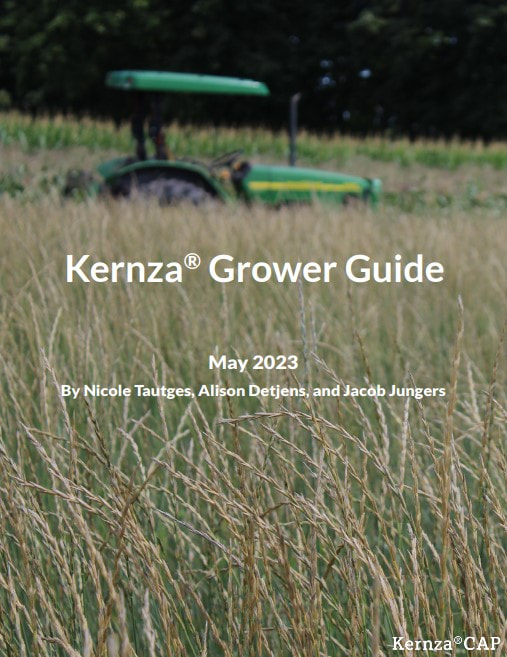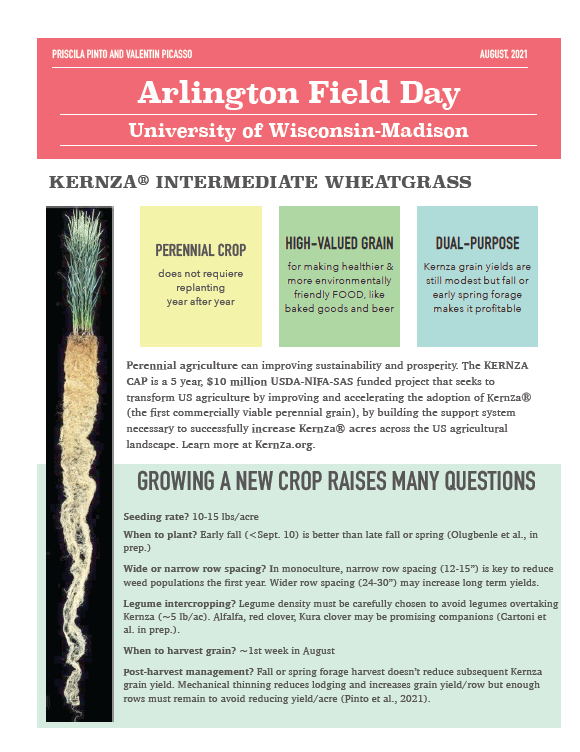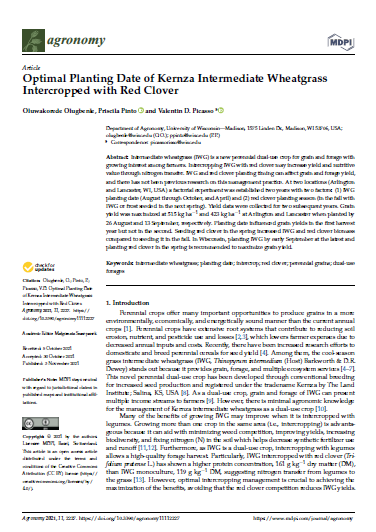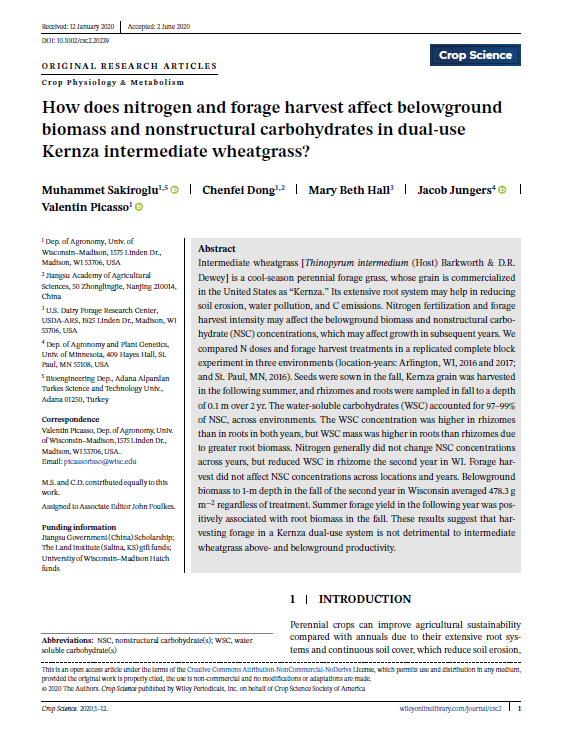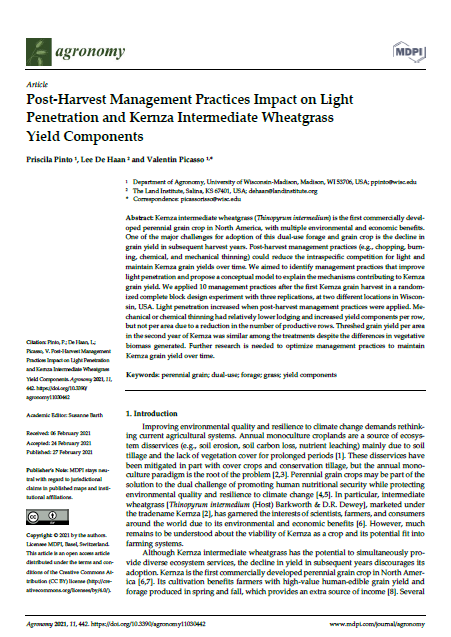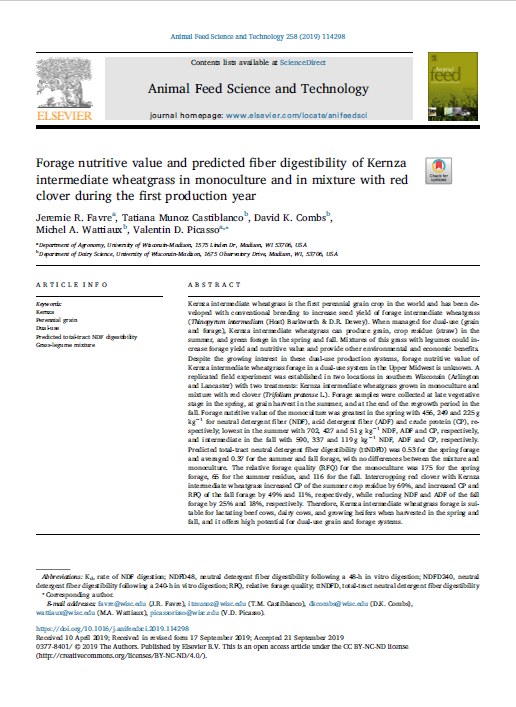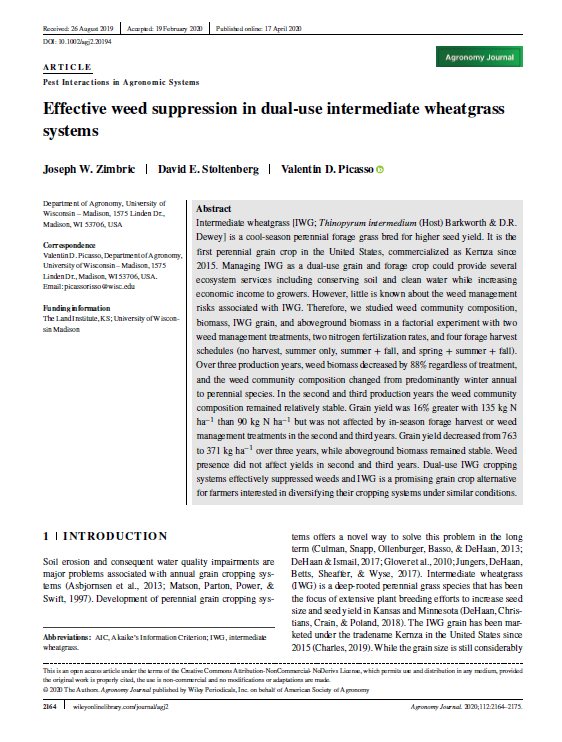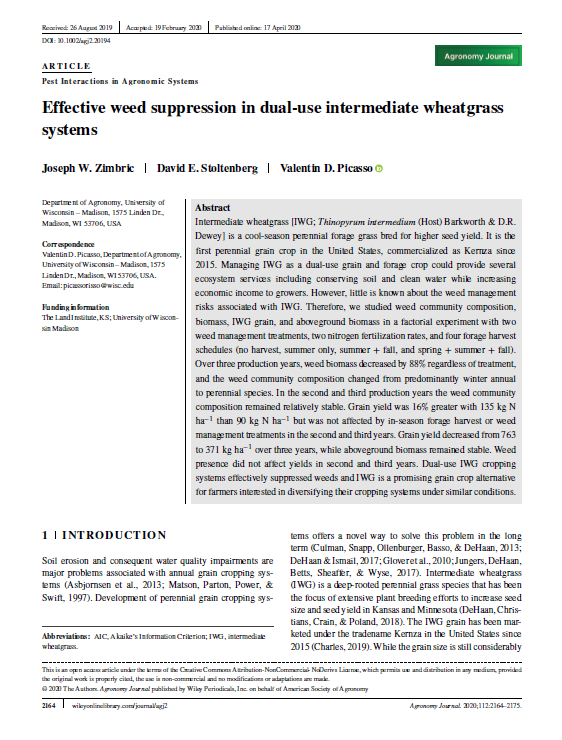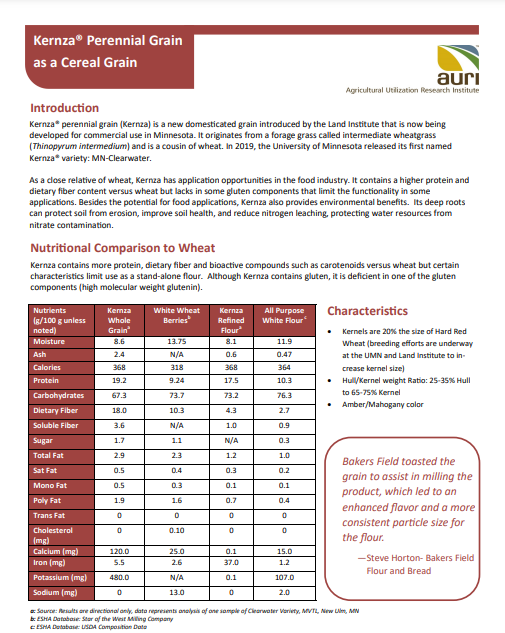Crop Profile
|
OVERVIEW
What is Kernza? Kernza is a perennial grain closely related to annual wheat. Because it is a perennial, Kernza does not need to be replanted each year, unlike annual wheat. Its roots can extend 10'+ into the soil, providing enormous environmental benefits like reducing soil erosion, sequestering carbon, and mitigating nutrient leaching into groundwater. Kernza can be grown as both a grain and fodder crop. History of Kernza The story of Kernza begins in the early 1980s when plant breeders at the Rodale Institute selected a Eurasian forage grass called intermediate wheatgrass (Thinopyrum intermedium) as an alternative to annual wheat using Wes Jackson's vision for a perennial-based agriculture as inspiration. Researchers at the USDA and Rodale Institute began breeding in 1988, selecting for traits such as improved fertility and seed size. In 2003, the Land Institute, a non-profit in Salina, Kansas, took over the work under the direction of Dr. Lee DeHaan. Breeding and research efforts continue today among a collaborative network of international partners, including the University of Wisconsin. The first Kernza perennial grain variety was released in 2019 by University of Minnesota and is named MN-Clearwater. Five other varieties were released in 2022 for a total of six approved varieties on the market today. Today, Kernza is an emerging crop that is being grown on a small scale for niche markets. As the genetics and agronomic understanding of the crop improve, the goal is for Kernza to be widely grown throughout the northern United States and around the world. For more information, see kernza.org and The Land Institute. PRODUCTION
Extensive research is being conducted on the production of Kernza. For the most up-to-date guide on growing Kernza, read "Kernza Production Basics" in the Resources and Information section below. Kernza.org and The Land Institute also have many resources on Kernza production. RESEARCH AND BREEDING PRIORITIES
Research is being conducted by a wide network of universities and non-profit organizations throughout the United States and internationally, including the University of Wisconsin. Research at the University of Wisconsin is focused on developing Kernza as a dual-use, grain and forage crop. Dr. Valentin Picasso and his research group are evaluating forage yield and nutritive value of Kernza dual-use systems, agronomic practices that optimize grain and forage yield, and legume-Kernza polycultures. For the latest publications from the Picasso lab, see the Resources and Information section below. There are currently four breeding programs working on Kernza: the foundational program at The Land Institute and programs at the University of Minnesota, University of Manitoba, and USDA-ARS at Utah State University. Among their top priorities is increasing grain size to 50% of annual wheat within the next ten years, from its current size of 25%. Other breeding objectives include higher yield, shatter resistance, free threshing ability, and grain quality. Long-term goals include developing varieties that resist lodging and have improved bread baking quality. For more information see kernza.org and The Land Institute. MARKETS
In 2013, the Birchwood Cafe in Minneapolis, MN was the first to offer Kernza products on its menu. Today, Kernza is being grown by over 100 farmers on almost 4000 acres in 18 states across the country. Producers, millers, and distributors are helping move grain from farm to market, and consumers are enjoying a wide variety of food products created by bakers, brewers, distillers, and chefs. Large companies such as Cascadia Farm (a subsidiary of General Mills) and Patagonia Provisions have begun incorporating Kernza into some of their foods, while dozens of smaller companies have developed commercial retail products. Because Kernza production remains experimental and seed supply is limited, interested growers must apply through The Land Institute and meet certain criteria. At this point, Kernza is still a niche product but the goal is to scale up production significantly and bring it to the mainstream. For more information see kernza.org and The Land Institute. |
Get Involved!Interested in growing Kernza? The Land Institute has put together an information sheet to help you decide if Kernza is a good fit for your farm. If you would like to apply to be a grower, please click here. |
Resources and Information
Read
The publications below are good primers on Kernza. For more information, visit kernza.org.
|
Kernza Perennial Grain Facts
Download Now |
|
The publications below are from research out of Dr. Valentin Picasso's lab at UW-Madison.
|
How Does Nitrogen and Forage Harvest Affect Belowground Biomass and Nonstructural Carbohydrates in Dual-Use Kernza Intermediate Wheatgrass?
Download Now |
Post-Harvest Management Practices Impact on Light Penetration and Kernza Intermediate Wheatgrass Yield Components
Download Now |
|
Forage Nutritive Value and Predicted Fiber Digestibility of Kernza Intermediate Wheatgrass in Monoculture and in Mixture with Red Clover During the First Production Year
Download Now |
Farmer Perspectives and Experiences Introducing the Novel Perennial Grain Kernza Intermediate Wheatgrass in the US Midwest
Download Now |
Effective Weed Suppression in Dual-Use Intermediate Wheatgrass Systems
Download Now |
Kernza Perennial Grain as a Cereal Grain
Download Now |
Watch
For in-depth videos on the latest Kernza research and supply chain development, watch the Kernza®Con22 YouTube playlist.
|
PBS NewsHour introduces Kernza as part of their "Future of Food" series
|
Recordings from Kernza Perennial Grain Meeting 2022 in Salina, Kansas
|
|
Exploring market opportunities for Kernza
Tessa Peters (The Land Institute) and Christopher Abbott (Sprowt Labs and Perennial Pantry) |
Kernza in Wisconsin on PBS Wisconsin's Around the Farm Table
|
Listen
More Information
Agricultural Utilization Research Institute
Forever Green Initiative
https://kernza.org/
Michael Fields Agricultural Institute
The Land Institute
University of Wisconsin-Madison, Valentin Picasso Lab
Forever Green Initiative
https://kernza.org/
Michael Fields Agricultural Institute
The Land Institute
University of Wisconsin-Madison, Valentin Picasso Lab
Email swmirsky@wisc.edu
Copyright 2022 University of Wisconsin Extension. All rights reserved.
An EEO/AA employer, University of Wisconsin Extension provides equal opportunities in employment and programming, including Title IX and American with Disabilities (ADA) requirements.
Copyright 2022 University of Wisconsin Extension. All rights reserved.
An EEO/AA employer, University of Wisconsin Extension provides equal opportunities in employment and programming, including Title IX and American with Disabilities (ADA) requirements.
Proudly powered by Weebly

